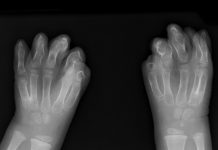Did you observe any swelling or bulge or do you feel tightness in that particular area?
This condition is mainly due to baker’s cyst, which is usually the result of your knee or joint problem like arthritis.
This pain of baker’s cyst can become worse when you completely extend your knee or even when you are physically active.
Baker’s cyst is more common in adults between 55 to 70 years of age and also in children between 4 and 7 years of age.
Almost one in five persons suffering with knee or joint pains is at increased risk of developing baker’s cyst.
Baker’s cyst can become more complicated if the fluid protrudes down your leg between the muscles of calf. Sometimes, these cysts can burst out by leaking the fluid down your inner leg to give the inner ankle an appearance of a painless bruise. This rupture of cyst is usually associated with swelling of the leg and can imitate phlebitis of leg.
What is the role of synovial fluid in developing baker’s cyst?
Baker’s cysts are most common and can be caused by any joint swelling. The cartilages and tendons present in your knee rely on a lubricating fluid called synovial fluid. This fluid plays a major role in the movement of your knees and reduces the friction between the moving parts of your legs.
Synovial fluid usually flows throughout your knee and passes in and out of various tissues present through out your knee.
A valve kind of system is present between your knee joint and the bursa, which is located at the back of your knee. This valve system mainly regulates the amount of this synovial fluid going in and out of bursa.
When your knee produces larger amounts of synovial fluid as a result of an inflammation at your knee joint, then you can experience swelling and pain at your knee point and results in baker’s cyst. This inflammation can occur with various types of arthritis or due to any knee injury.
By following P.R.I.C.E principle, you can reduce the symptoms of baker’s cyst. These letters generally stands for protection, rest, ice, compression and also elevation.
So try to take better advice from your doctor and follow this principle in the treatment of your baker’s cyst to get relief from the pain and swelling of your knee.













